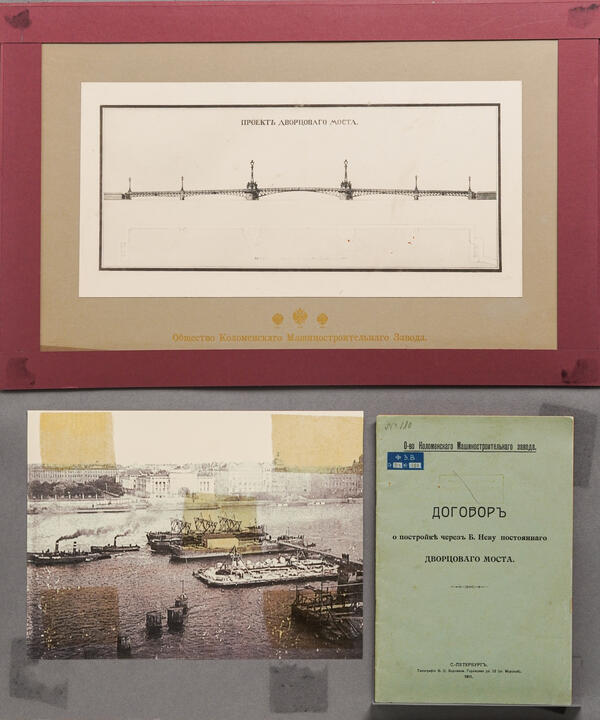The rapid development of rail transport in the Russian Empire in the second half of the 19th century encouraged the construction of the Kolomna Machine-Building Plant, which played an exceptional role in the history of the region, the Moscow Governorate and the whole of Russia. The foundation of the plant was laid in 1863, when the military engineer Amand Struve leased a plot of land from the peasants of the Bobrovo village land and obtained a document allowing him “to construct various buildings, both plants and factories.”
The first products of the factory were metal structures for bridges, previously ordered from abroad. Parts of the bridge across the Oka near Kolomna, which was constructed for the Moscow-Saratov rail line, were made at the plant. Subsequently, bridges were built on the ways from Kolomna to Voronezh and from Kursk to Serpukhov. Among the most ambitious projects of the factory were the largest bridges over the Neva in St. Petersburg, the Palace and Liteyny bridges. The Palace Bridge is a motorway metal drawbridge across the Neva River in St. Petersburg. It connects the central part of the city and Vasilyevsky Island. The Palace Bridge was built by the Kolomna Machine Building Plant and for more than a century has been a landmark of not only the northern capital of Russia, but also of the whole country.
The construction of the bridge over the Neva River began in February 1911, that is when a contract was signed on its construction. It was specified that all work must be done using local materials by Russian workers and Russian engineers. Cast-iron arches made by the Kolomna Machine-Building Plant arrived by water and were installed on site. Two girders were assembled directly on the installed span by crane. However, the construction of this massive and complex structure was delayed, due to the flooding in April 1914 and the outbreak of the First World War in the summer of 1914. Despite these events, the bridge was successfully completed.
The Palace Bridge is recognized as a cultural heritage site of regional significance in Russia. Its production turned out to be significant for the Kolomna Machine-Building Plant not only because of its complex technical solutions. The Palace Bridge was the solemn final chord that brought bridge-building to a close as one of the main activities of the factory in 1916.
The first products of the factory were metal structures for bridges, previously ordered from abroad. Parts of the bridge across the Oka near Kolomna, which was constructed for the Moscow-Saratov rail line, were made at the plant. Subsequently, bridges were built on the ways from Kolomna to Voronezh and from Kursk to Serpukhov. Among the most ambitious projects of the factory were the largest bridges over the Neva in St. Petersburg, the Palace and Liteyny bridges. The Palace Bridge is a motorway metal drawbridge across the Neva River in St. Petersburg. It connects the central part of the city and Vasilyevsky Island. The Palace Bridge was built by the Kolomna Machine Building Plant and for more than a century has been a landmark of not only the northern capital of Russia, but also of the whole country.
The construction of the bridge over the Neva River began in February 1911, that is when a contract was signed on its construction. It was specified that all work must be done using local materials by Russian workers and Russian engineers. Cast-iron arches made by the Kolomna Machine-Building Plant arrived by water and were installed on site. Two girders were assembled directly on the installed span by crane. However, the construction of this massive and complex structure was delayed, due to the flooding in April 1914 and the outbreak of the First World War in the summer of 1914. Despite these events, the bridge was successfully completed.
The Palace Bridge is recognized as a cultural heritage site of regional significance in Russia. Its production turned out to be significant for the Kolomna Machine-Building Plant not only because of its complex technical solutions. The Palace Bridge was the solemn final chord that brought bridge-building to a close as one of the main activities of the factory in 1916.




